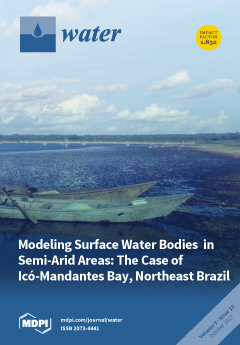The eddy covariance method was used to study the CO
2 budget of the Liaohe Delta reed wetland in northern China during 2012–2015. The changes in environmental factors (including meteorology, vegetation, hydrology, and soil) were analyzed simultaneously. The change in the trend of
[...] Read more.
The eddy covariance method was used to study the CO
2 budget of the Liaohe Delta reed wetland in northern China during 2012–2015. The changes in environmental factors (including meteorology, vegetation, hydrology, and soil) were analyzed simultaneously. The change in the trend of the CO
2 concentration in the reed wetland was similar to global changes over the four years. The average annual CO
2 accumulation was 2.037 kg·CO
2·m
−2, ranging from 1.472 to 2.297 kg·CO
2·m
−2. The seasonal characteristics of the CO
2 exchange included high CO
2 absorption in June and July, and high emissions in April and from September to October, with the highest emissions in July 2015. The average temperatures from 2013 to 2015 were higher than the 50-year average, largely due to increased temperatures in winter. Precipitation was below the 50-year average, mainly because of low precipitation in summer. The average wind speed was less than the 50-year average, and sunshine duration decreased each year. The CO
2 exchange and environmental factors had a degree of correlation or consistency. The contribution of meteorology, vegetation, hydrology, and soil to the CO
2 budget was analyzed using the partial least squares method. Water and soil temperature had a greater effect on the CO
2 exchange variability. The regression equation of the CO
2 budget was calculated using the significant contributing factors, including temperature, precipitation, relative humidity, water-table level, salinity, and biomass. The model fit explained more than 70% of the CO
2 exchange, and the simulation results were robust.
Full article





